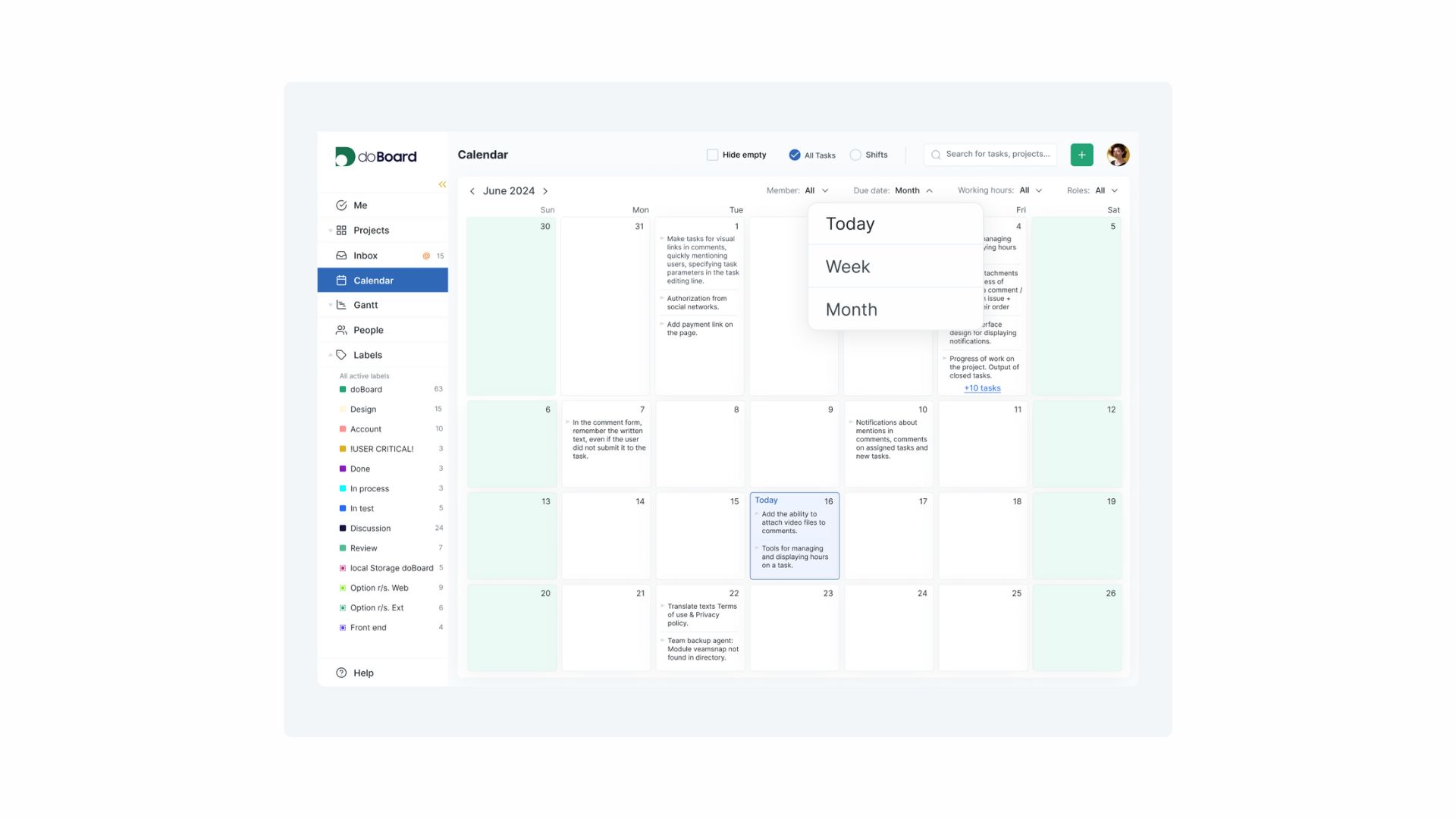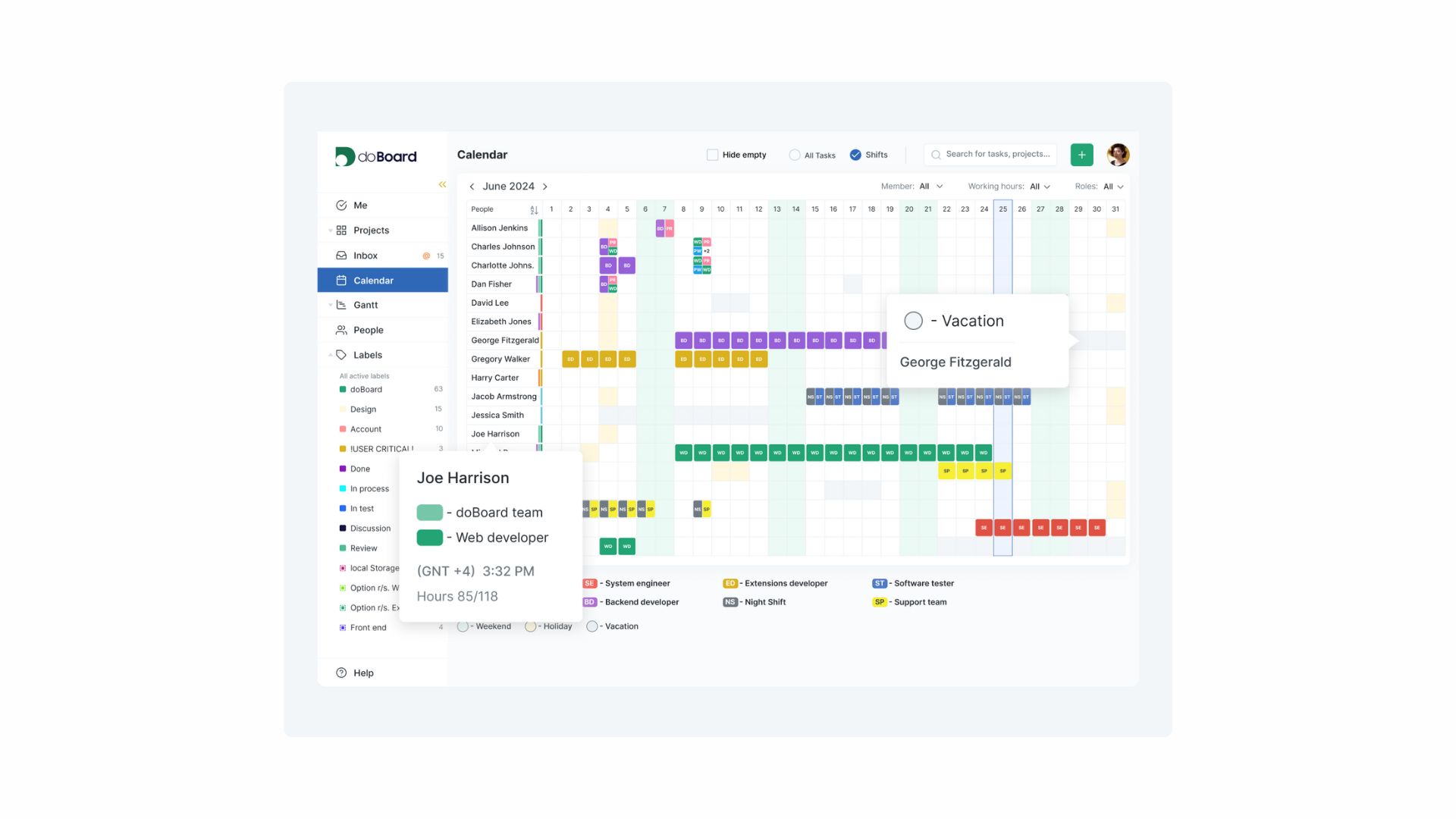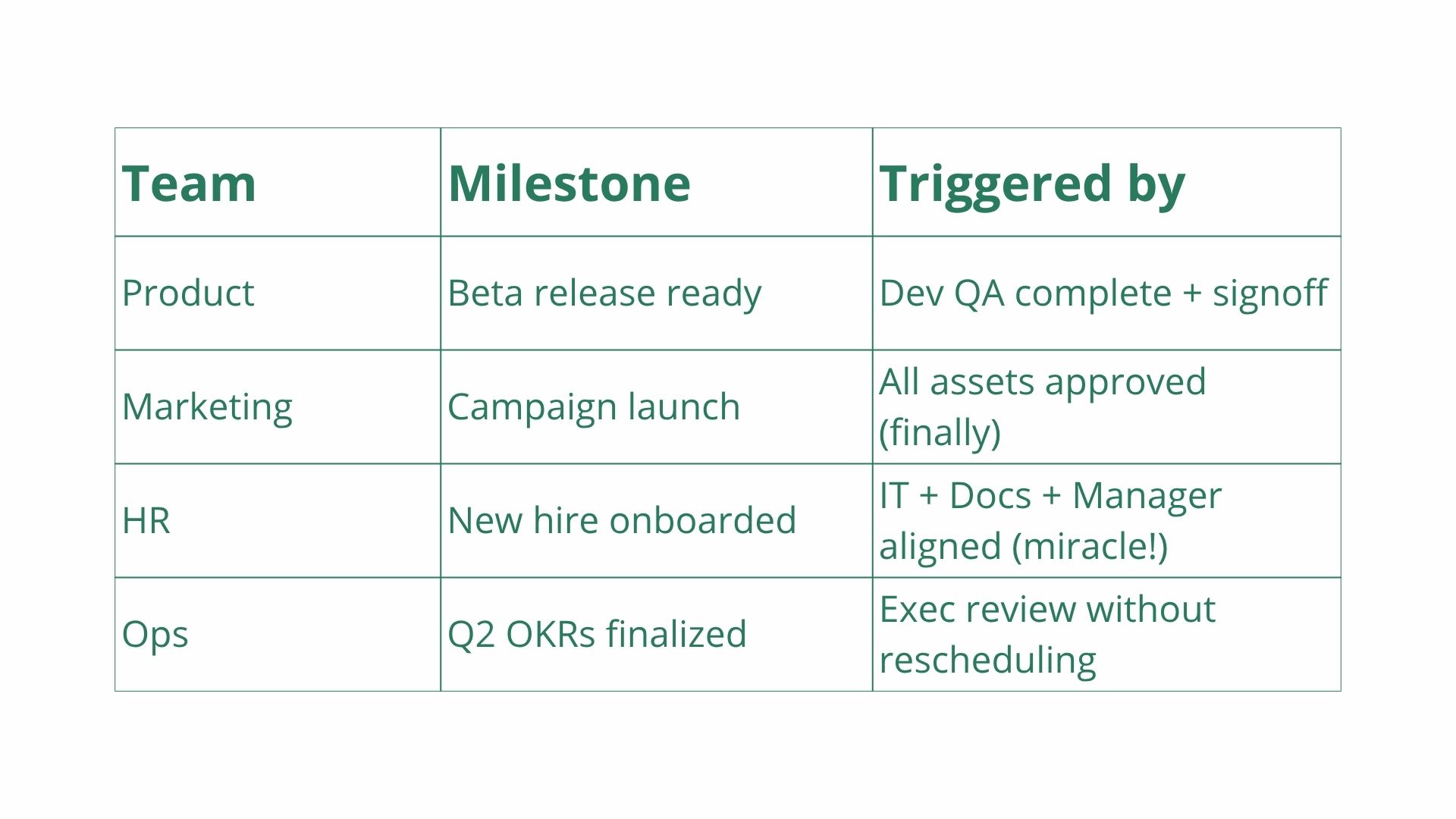Let’s be honest: most of us hear “milestone” and think, “Oh, that thing the PM adds to the timeline so it looks official.” It’s a classic misunderstanding of milestone project management — which is actually about clarity, alignment, and meaningful progress markers.
But in real project management (and we mean real, like last-minute chaos and “where’s the file?” vibes), milestones are much more useful.
They’re not tasks or deliverables.
Instead, they’re checkpoints — the “stop scrolling Slack and look up” moments that tell the whole team: something important just happened.
At doBoard, we try to make milestone project management a little less… painful. We give you simple ways to set, track, and share milestones, without needing a PMBOK manual or a six-week certification.
What counts as a milestone in milestone project management (besides your caffeine intake)?
A milestone in project management usually means:
- The end of a phase (like “design is finally done — we hope”)
- A go/no-go decision (a.k.a. the dreaded exec meeting)
- A big delivery (like shipping a beta or sending an email to 100,000 people)
- An approval (from someone who only checks Slack once a week)
In doBoard, you can mark any task or project as a milestone. Poof — it now shows up clearly in your timeline, Kanban, or calendar view, so no one has to guess what’s important (or pretend they saw it).
Learn how to create a milestone in doBoard

Why milestones matter (yes, even the boring ones)
Milestones help your team:
- Stop working in circles and start moving forward
- Celebrate the stuff that actually moved the needle
- Catch delays early (instead of “why isn’t this done?” two weeks later)
- Communicate like grown-ups (or at least like people with a shared roadmap)
Especially in distributed teams — where someone’s always asleep and someone’s always typing “quick Q?” at 2 a.m. — clear milestones save everyone’s sanity.
And if nothing else, they give you an excuse to post a celebratory GIF in the team chat.

How doBoard makes milestone project management… bearable
We built doBoard so teams can plan together without needing 27 Zoom calls. That includes milestones.
You can:
- Add milestones to any Kanban card or timeline
- See them in shared calendars and (yes) Gantt charts
- Color-code them so they pop (and feel slightly more exciting)
- Link them to dependencies, subtasks, or deliverables
Explore doBoard’s project timeline view

Need to shift a date? Drag it. Missed it? Update it. Milestones also show up in your Today and Upcoming tabs, so you don’t miss something big because you were too deep in your inbox.
Milestones vs. tasks (a love story)
Tasks = the stuff you do. Milestones = the stuff you care about.
You might have ten tasks to get to one milestone. But that milestone is the story — the thing you screenshot for your boss or brag about in retros.
In doBoard, we help make that distinction clear, so your team stops treating every task like it’s equally urgent (spoiler: it’s not).
Common milestone examples (and how teams actually use them)
Need some inspiration that isn’t from a textbook? Here’s how real teams use milestones in doBoard:

Milestone meaning in project management (without the jargon)
Here’s the deal: milestones give meaning to all that motion. Otherwise, you’re just busy. Milestone project management means asking: what actually matters?
In doBoard, milestones are simple, flexible, and visible. They’re not another thing to manage — they’re how you measure real progress.
3 quick tips for setting better milestones (without overthinking them)
1. Start with the outcome, not the task. What will be true when this milestone is reached? A milestone should signal change, not just effort.
2. Make it visible. If your milestone isn’t easy to spot on your board or calendar, it’s not helping. Use colors, labels, and names that actually stand out (no more “Phase 2 Complete” unless you want everyone to ignore it).
3. Link it to ownership. Someone should always “own” the milestone — even if they’re not doing every task. Accountability is what turns a nice label into real momentum.
Final thought (or: why we love milestones, even if they never bring snacks)
In fast-moving teams, it’s easy to confuse activity with impact. Milestones cut through the chaos.
They’re your signal: “this was worth it.”
And when you mark a milestone in doBoard, your whole team sees it — without needing a meeting to explain why it mattered.
Try milestone project management in doBoard — for free
Want to go deeper? Read: doBoard vs Trello and Asana: Empathy-Driven Analytics for Teams
- Why We Moved from Basecamp to doBoard: A Conversation Between Two Managers - November 6, 2025
- WordPress Website Maintenance Checklist - September 29, 2025
- Editorial Calendar for SEO: Plan Content Strategy Smarter - September 28, 2025